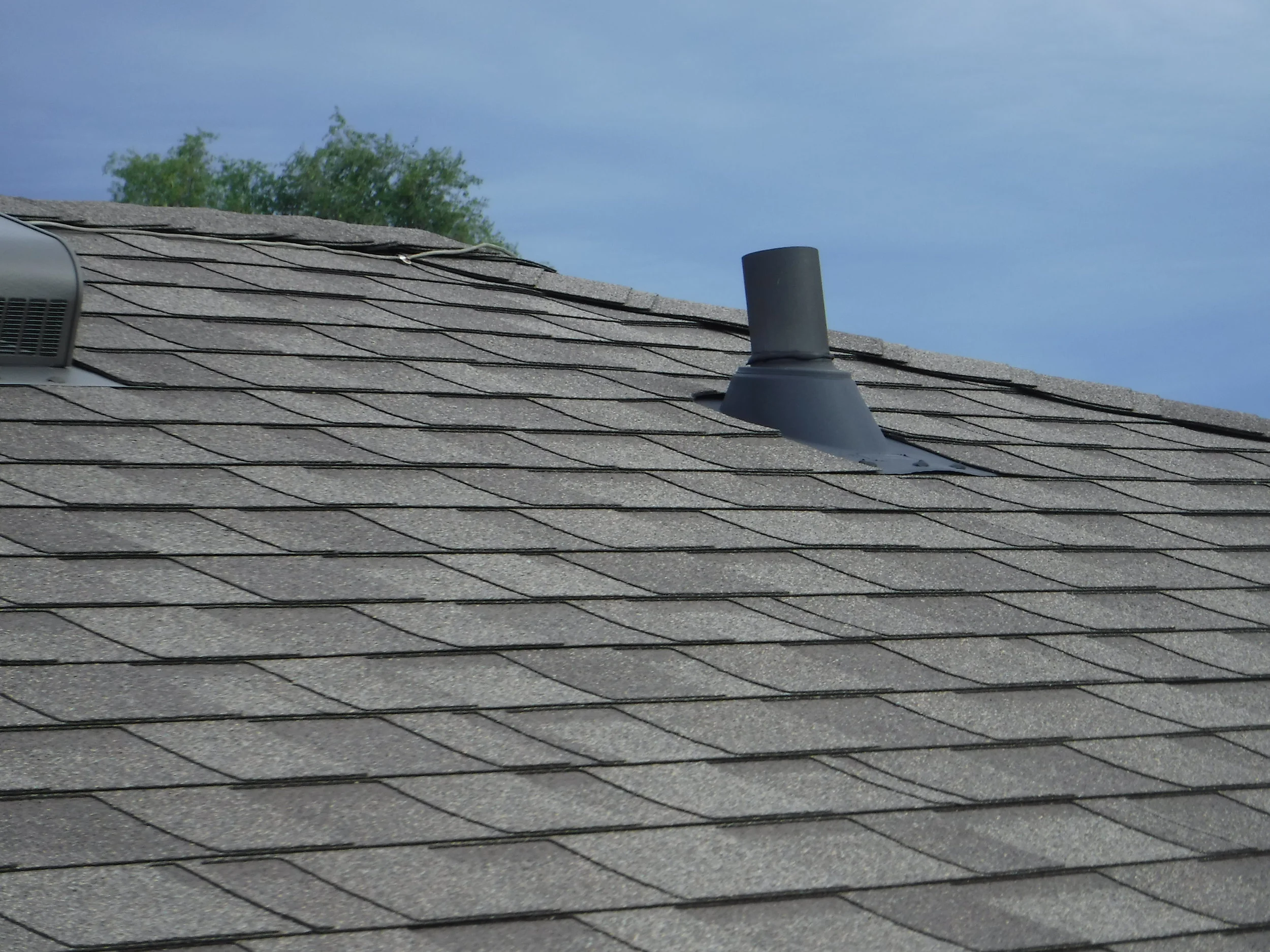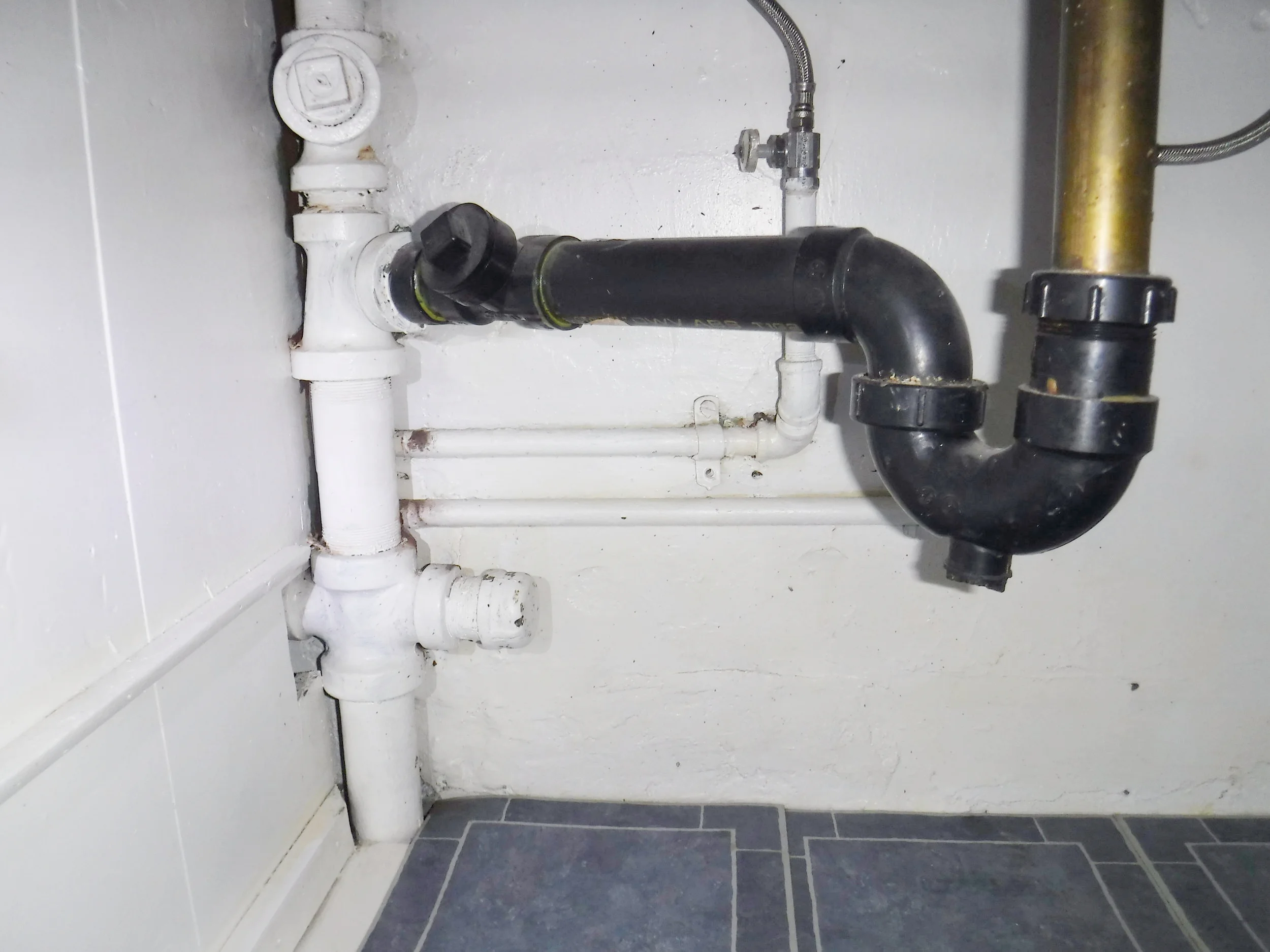Indoor plumbing drainage. It's pretty cool. It takes our waste and sends it away never to be seen or thought of again. Of course, what's happening is that pipes collect the waste and send it out of our house to a sewer main or a septic tank not far from the house where it decomposes and creates stinky and toxic gases. The gases should stay down there, but I've been in many houses where people have complained of occasional sewer gas odours inside the house. Sometimes it's just a convenient excuse, but sometimes it's a legitimate concern.
Why is that happening? Usually it's due to improper venting, improper sink traps, or a combination of both.
The drainage system in your house is referred to as the DWV system. Drainage, waste, venting. We are concerned with the venting for the time being.
Note: for the purposes of this article, we will be referring to all drainage systems as sewer systems, though the household plumbing concepts and requirements are the same for a septic system.
Venting
Because there can be significant air movement in sewers pushing and pulling on the air in all connected pipes, a non-vented drain system would frequently have sewer gases being pushed up into the house regardless of whether you have traps under your sinks (more on this later). A non-vented system would also pull air down the drains, slurping the standing water out of the traps, leaving air free to travel back into the house (again, more on this later).
The solution for this is to have vent stacks. These are pipes that are connected to the main sewer pipe in the house which extend all the way up through the house through the roof and terminate six inches to a foot above the roof surface. They look like tiny round chimneys. Vent stacks allow the free movement of air between the outside environment and the sewers, reducing the air pressure in the pipes at the fixtures. Of course, we still need traps to totally prevent gases from escaping into the house.
Concept of a drain trap
A drain trap is basically a reservoir of water that is maintained in the pipe after the fixture has finished draining. The shape of the pipe holds water as a barrier that prevents air from moving through it. An improperly vented trap and plumbing system will cause air pressures to push and pull air through the trap. A properly vented system will redirect those pressures leaving the water reservoir intact.
Types of traps
There are many types of traps that have been used over the years (bell traps and kettle traps, for example). This article will only focus on S-traps and P-traps. P-traps are the only ones allowed by the Ontario Building Code in residential plumbing and S-traps as their predecessor are still quite common. In fact, I still see them installed in new DIY projects unfortunately.
S-traps
Once you see an S-trap, you understand how it got it's name. If you can think of a better name, I'd love to hear it. You can see that the shape would allow water to stand in the U-shaped loop. This is the barrier for air intended to stop sewer gases. This is fine, unless that seal is not complete. The problem arises when a large volume of water is draining. The water downstream in the pipe will continue to pull the water behind it, no different than how fluid is pulled up a straw. This pulls water out of the trap until it slurps some air from the sink drain. This may cause the remaining water to be insufficient, potentially leaving an air gap in the trap. What we need is to be able to introduce air between the trap and the rest of the drain pipe. This will break the syphon, but leave the trap full of water and sealed to prevent air flow.
P-traps
A P trap has a less obvious name purpose, but once we started naming with letter shapes, we couldn't let it go. It is kinda sorta shaped like a P. Just go with it.
The P-trap uses the first half of the S-trap, the U-shaped loop. This is still where the water barrier is kept. But instead of looping straight back down, it drains horizontally. Usually it goes into the wall where the remainder of the path is a mystery. If built properly, the horizontal pipe meets a vertical pipe that not only sends the water downward to its doom, but it also allows air to enter from above. The horizontal pipe allows air to travel back to the trap as water flows away from it, breaking the syphon and leaving the trap fully sealed.
Final Thoughts
Building codes in every area are very detailed and particular about pipe diameters, pipe lengths, angle of horizontal pipe slope, types of fittings, distance of fixtures from vent pipes, and anything else related to the plumbing system. This article is not intended to go deeply into any of that, but of course, if you have any questions, contact Jason at Cherry Home Inspections or your favourite plumber. Just be aware that the drainage system is a complex system that is intended to whisk away your waste without any more effort than the flush of a toilet. A properly designed and installed system will exploit gravity to swiftly remove all waste while allowing air to flow freely between the exterior and the sewers without entering your house. An improperly designed and installed system could result in stinky and toxic air as well as pipe clogs that can result in nasty, costly flooding of your home.
If you are buying a home, make sure the plumbing is done properly. If you can assess it yourself, great. If not, find someone who can. If you are renovating, make sure it's done right the first time. The results can range from inconvenient to catastrophic if it's not. If you see that you have S-traps or no traps under your sinks, it's important to have that addressed to prevent the stinkiness and sadness that comes from sewer gases in your home.




